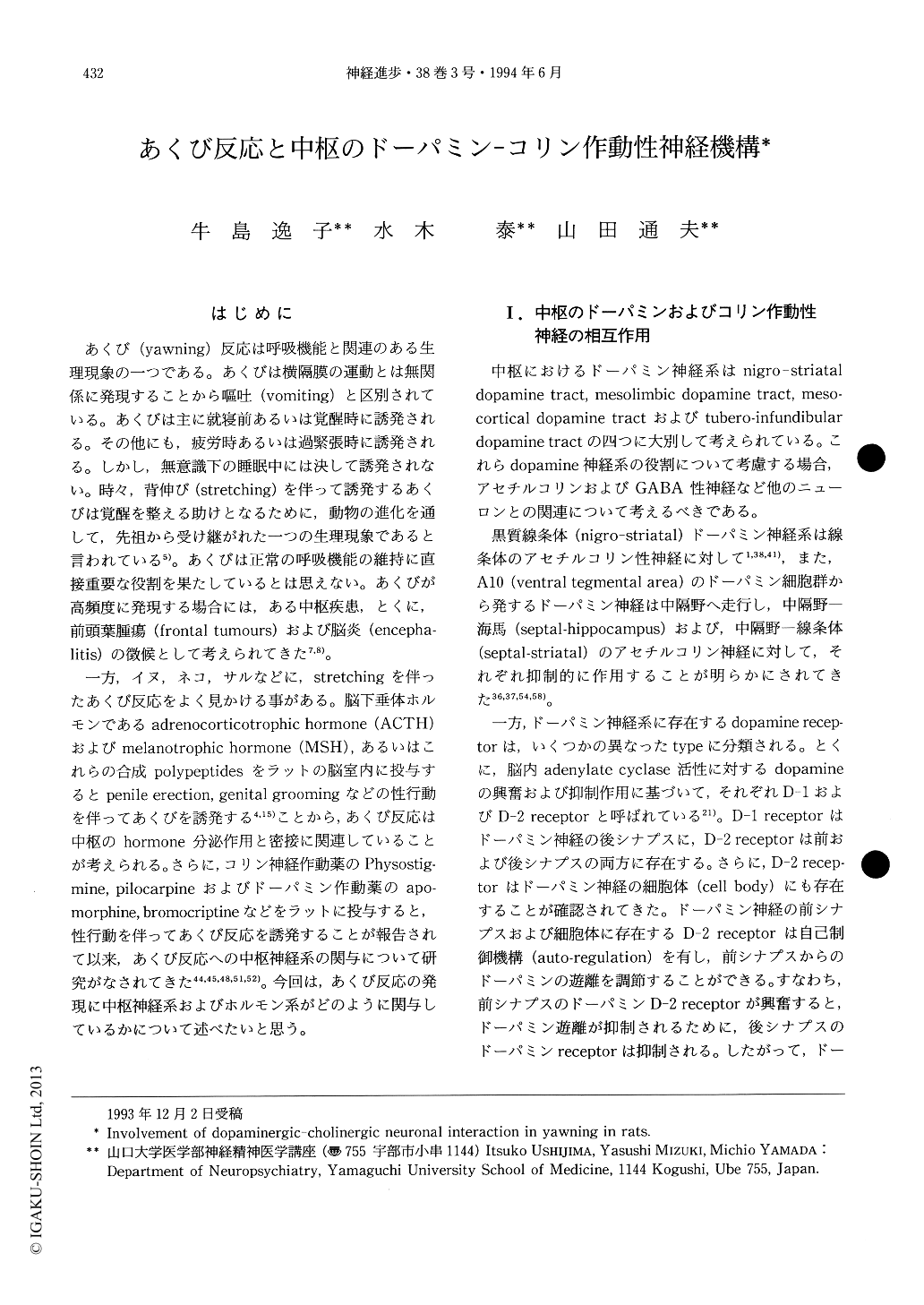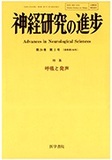Japanese
English
- 有料閲覧
- Abstract 文献概要
- 1ページ目 Look Inside
はじめに
あくび(yawning)反応は呼吸機能と関連のある生理現象の一つである。あくびは横隔膜の運動とは無関係に発現することから嘔吐(vomiting)と区別されている。あくびは主に就寝前あるいは覚醒時に誘発される。その他にも,疲労時あるいは過緊張時に誘発される。しかし,無意識下の睡眠中には決して誘発されない。時々,背伸び(stretching)を伴って誘発するあくびは覚醒を整える助けとなるために,動物の進化を通して,先祖から受け継がれた一つの生理現象であると言われている5)。あくびは正常の呼吸機能の維持に直接重要な役割を果たしているとは思えない。あくびが高頻度に発現する場合には,ある中枢疾患,とくに,前頭葉腫瘍(frontal tumours)および脳炎(encephalitis)の徴候として考えられてきた7,8)。
一方,イヌ,ネコ,サルなどに,stretchingを伴ったあくび反応をよく見かける事がある。
Physostigmine, an anticholinesterase agent, and pilocarpine, a cholinergic agonist acting predominantly upon muscarinic M-1 receptors, elicit yawning and chewing accompanied by intermittent stretching and sexual arousal (penile erection and genital grooming) in rats. High doses of these drugs also induce teeth chattering. The onset-and peak time of yawning induced by the high doses, as compared with low doses, of these drugs is delayed.

Copyright © 1994, Igaku-Shoin Ltd. All rights reserved.


